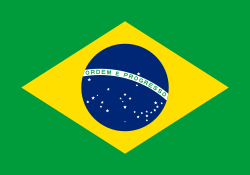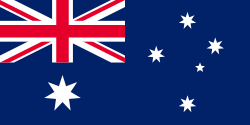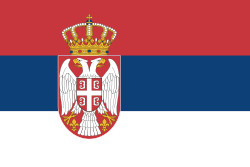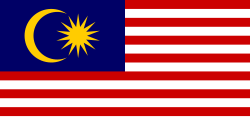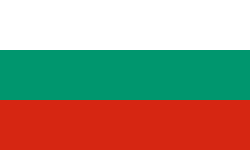Australian Open 2018 – čtyřhra juniorů
| Australian Open 2018 | |
|---|---|
| Vítězové: | |
| Finalisté: | |
| Výsledek: | 6–2, 6–2 |
| Soutěže | |
| mužská dvouhra (q) • mužská čtyřhra | |
| ženská dvouhra (q) • ženská čtyřhra | |
| smíšená čtyřhra | |
| dvouhra juniorů • čtyřhra juniorů | |
| dvouhra juniorek • čtyřhra juniorek | |
| Australian Open čtyřhra juniorů | |
| 2017 ◄◄ 2018 ►► 2019 | |
| Grand Slam 2018 čtyřhra juniorů | |
| Australian Open • French Open Wimbledon • US Open | |
Čtyřhra juniorů Australian Open 2018 probíhala ve druhé polovině ledna 2018. Do deblové soutěže melbournského grandslamu nastoupilo třicet dva párů tvořených hráči, kteří splňovali kritéria juniorské kategorie. Obhájcem titulu byl tchajwansko-čínský pár 18letých juniorů Hsu Yu-hsiou a Čao Ling-si.[1] Hsu již nebyl věkově způsobilý do soutěže zasáhnout a Čao se jí rozhodl nezúčastnit.
Vítězem se stal sedmý nasazený francouzský pár složený ze 17letého Huga Gastona a 18letého Clémenta Tabura, kteří ve finále hladce zdolali německou dvojici Rudolf Molleker a Henri Squire, startující z pozice náhradníků, po dvousetovém průběhu. Každý z vítězů získal premiérový grandslamový titul kariéry a do juniorského kombinovaného žebříčku ITF si připsal 270 bodů.[2] Navázali tak na výhru jediných francouzských vítězů v této soutěži jako páru, Jérôma Haehnela a Juliena Jeanpierreho, kteří si z Melbourne Parku odvezli triumf v roce 1998. Třetí Francouz Nicolas Mahut pak získal juniorskou trofej se Španělem Tommym Robredem v sezóně 2000.[2]
Nasazení párů
- 1.
 Sebastián Báez /
Sebastián Báez /  Thiago Seyboth Wild (2. kolo)
Thiago Seyboth Wild (2. kolo)- 2.
 Sebastian Korda /
Sebastian Korda /  Nicolás Mejía (čtvrtfinále)
Nicolás Mejía (čtvrtfinále)- 3.
 Naoki Tadžima /
Naoki Tadžima /  Alexej Zacharov (čtvrtfinále, odstoupili)
Alexej Zacharov (čtvrtfinále, odstoupili)- 4.
 Aidan McHugh /
Aidan McHugh /  Timofej Skatov (čtvrtfinále)
Timofej Skatov (čtvrtfinále)- 5.
 Tristan Boyer /
Tristan Boyer /  Juan Manuel Cerúndolo (2. kolo)
Juan Manuel Cerúndolo (2. kolo)- 6.
 Tomáš Macháč /
Tomáš Macháč /  Ondřej Štyler (semifinále)
Ondřej Štyler (semifinále)- 7.
 Hugo Gaston /
Hugo Gaston /  Clément Tabur (vítězové)
Clément Tabur (vítězové)- 8.
 Jeong Yeong-seok /
Jeong Yeong-seok /  Park Ui-sung (odstoupili)
Park Ui-sung (odstoupili) - 2.
Pavouk
| Legenda | ||
|
|
|
Finálová fáze
| Semifinále | Finále | |||||||||||
| Alt | | 6 | 6 | |||||||||
| | 2 | 3 | ||||||||||
| Alt | | 2 | 2 | |||||||||
| 7 | | 6 | 6 | |||||||||
| 6 | | 4 | 65 | |||||||||
| 7 | | 6 | 77 | |||||||||
Horní polovina
Dolní polovina
| První kolo | Druhé kolo | Čtvrtfinále | Semifinále | ||||||||||||||||||||||
| 6 | | 3 | 6 | [10] | |||||||||||||||||||||
| | 6 | 3 | [5] | 6 | | 6 | 7 | ||||||||||||||||||
| | 6 | 7 | | 4 | 5 | ||||||||||||||||||||
| | 3 | 5 | 6 | | 2 | 7 | [10] | ||||||||||||||||||
| | 6 | 6 | 4 | | 6 | 5 | [6] | ||||||||||||||||||
| WC | | 3 | 0 | | 4 | 65 | |||||||||||||||||||
| | 2 | 2 | 4 | | 6 | 77 | |||||||||||||||||||
| 4 | | 6 | 6 | 6 | | 4 | 65 | ||||||||||||||||||
| 7 | | 6 | 6 | 7 | | 6 | 77 | ||||||||||||||||||
| | 3 | 3 | 7 | | 6 | 6 | |||||||||||||||||||
| | 6 | 6 | | 4 | 2 | ||||||||||||||||||||
| | 3 | 2 | 7 | | 6 | 6 | |||||||||||||||||||
| | 6 | 77 | 2 | | 3 | 4 | |||||||||||||||||||
| | 1 | 65 | | 4 | 4 | ||||||||||||||||||||
| WC | | 0 | 4 | 2 | | 6 | 6 | ||||||||||||||||||
| 2 | | 6 | 6 | ||||||||||||||||||||||
Odkazy
Reference
V tomto článku byl použit překlad textu z článku 2018 Australian Open – Boys' Doubles na anglické Wikipedii.
- ↑ The Dominian Post. Kiwi falls at final hurdle in doubles [online]. Press reader, 2017-01-30 [cit. 2017-01-30]. Dostupné online. (anglicky)
- ↑ a b Damien Gozioso, France Bleu Occitanie. Tennis : Le jeune blagnacais Hugo Gaston remporte le double junior de l'Open d'Australie [online]. Press reader, 2018-01-26 [cit. 2018-02-01]. Dostupné online. (francouzsky)
Externí odkazy
- Čtyřhra juniorů na Australian Open 2018 [online]. Australian Open. Dostupné online. (anglicky)
Média použitá na této stránce
Vlajka České republiky. Podoba státní vlajky České republiky je definována zákonem České národní rady č. 3/1993 Sb., o státních symbolech České republiky, přijatým 17. prosince 1992 a který nabyl účinnosti 1. ledna 1993, kdy rozdělením České a Slovenské Federativní republiky vznikla samostatná Česká republika. Vlajka je popsána v § 4 takto: „Státní vlajka České republiky se skládá z horního pruhu bílého a dolního pruhu červeného, mezi něž je vsunut žerďový modrý klín do poloviny délky vlajky. Poměr šířky k její délce je 2 : 3.“
Used color: National flag | South African Government and Pantone Color Picker
| zelená | rendered as RGB 0 119 73 | Pantone 3415 C |
| žlutá | rendered as RGB 255 184 28 | Pantone 1235 C |
| červená | rendered as RGB 224 60 49 | Pantone 179 C |
| modrá | rendered as RGB 0 20 137 | Pantone Reflex Blue C |
| bílá | rendered as RGB 255 255 255 | |
| černá | rendered as RGB 0 0 0 |
The flag of the Dominican Republic has a centered white cross that extends to the edges. This emblem is similar to the flag design and shows a bible, a cross of gold and 6 Dominican flags. There are branches of olive and palm around the shield and above on the ribbon is the motto "Dios,Patria!, Libertad" ("God, Country, Freedom") and to amiable freedom. The blue is said to stand for liberty, red for the fire and blood of the independence struggle and the white cross symbolized that God has not forgotten his people. "Republica Dominicana". The Dominican flag was designed by Juan Pablo Duarte, father of the national Independence of Dominican Republic. The first dominican flag was sewn by a young lady named Concepción Bona, who lived across the street of El Baluarte, monument where the patriots gathered to fight for the independence, the night of February 27th, 1844. Concepción Bona was helped by her first cousin María de Jesús Pina.
The flag of the Dominican Republic has a centered white cross that extends to the edges. This emblem is similar to the flag design and shows a bible, a cross of gold and 6 Dominican flags. There are branches of olive and palm around the shield and above on the ribbon is the motto "Dios,Patria!, Libertad" ("God, Country, Freedom") and to amiable freedom. The blue is said to stand for liberty, red for the fire and blood of the independence struggle and the white cross symbolized that God has not forgotten his people. "Republica Dominicana". The Dominican flag was designed by Juan Pablo Duarte, father of the national Independence of Dominican Republic. The first dominican flag was sewn by a young lady named Concepción Bona, who lived across the street of El Baluarte, monument where the patriots gathered to fight for the independence, the night of February 27th, 1844. Concepción Bona was helped by her first cousin María de Jesús Pina.
Flag of Australia, when congruence with this colour chart is required (i.e. when a "less bright" version is needed).
See Flag of Australia.svg for main file information.Chinese Taipei Olympic Flag. According to the official website of Chinese Taipei Olympic Committee, Blue Sky(circle) & White Sun(triangles) above the Olympic rings is neither the National Emblem of the Republic of China, nor the Party Emblem of Kuomintang (KMT), but a design in between, where the triangles do not extend to the edge of the blue circle, as registered at International Olympic Committee in 1981 and digitally rendered in 2013. Besides, the blue outline of the five-petaled plum blossom is broader than the red one. Moreover, the CMYK code of the blue one and the Blue Sky & White Sun is "C100-M100-Y0-K0", and different from the Olympic rings (C100-M25-Y0-K0). Note that it's the only version recognized by IOC.



